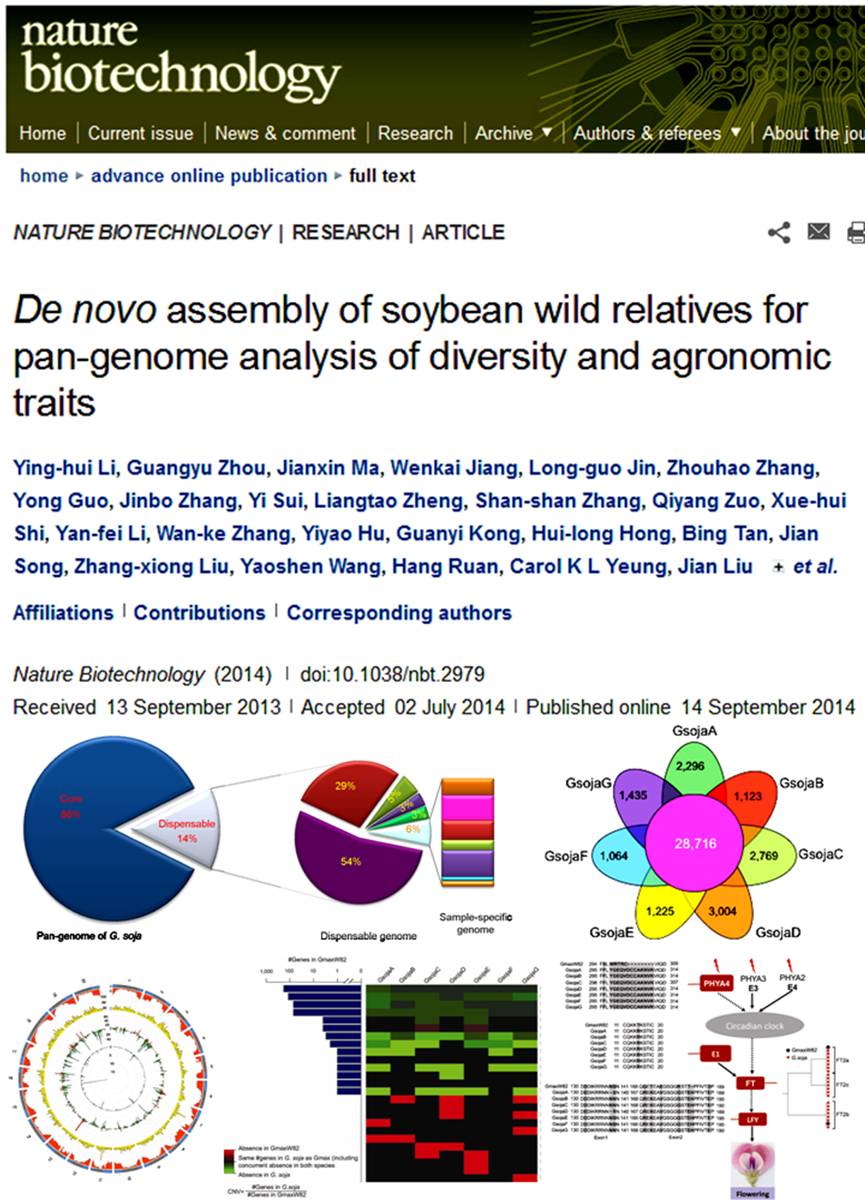Chinese Scientist Constructs the First Plant Pan-Genome for Annual Wild Soybean
Date:2014-12-31Author:AdminSource:ICS
A team of Chinese scientists led by Dr. Lijuan Qiu from the Institute of Crop Sciences (ICS) of Chinese Academy of Agricultural Sciences (CAAS) constructed the first plant pan-genome for annual wild soybean, the progenitor of cultivated soybean. They proposed a new method for the conservation of crop wild relatives, gene discovery and utilization in the breeding. Their findings were published online in Nature Biotechnology on September 14th, 2014.
Soybean [Glycine max (L.) Merr.], with high protein and oil content, is an important crop worldwide. Recently, soybean yields have remained stagnant and few significant breakthroughs have been made in soybean breeding because of the narrow genetic base that exists in the modern cultivars. Soybean was domesticated from its wild progenitor, Glycine soja, through the artificial selection. Wild soybean provides a promising source of novel genes for soybean improvement needed to broaden the genetic base of modern cultivars and to respond to rapid population growth and environmental changes.
The research team reports the establishment and analysis of pan-genome of wild soybean, by sequencing and de novo assembly of seven phylogenetically and geographically representative accessions. The study revealed inter-genomic variation such as lineage-specific genes and genes with copy number variation or large-effect mutations. G. soja contained more R (Resistant)-gene domain architectures than G. max possibly reflecting adaptation to varied biotic stresses. Meanwhile, this study indicates a set of genes that may contribute to variation of agronomic traits such as pathogen resistance, seed composition, flowering and maturity time, organ size and final biomass. Their results provide important information for clarifying the genetic variation of cultivated soybean during domestication. Compared to soybean reference genome (var. Williams 82, 950Mb), extensive genetic variation exists in wild soybean. The estimated genome sizes ranged from 0.89 Gbp to 1.12 Gbp. Among the 59,080 annotated gene families, nearly half (48.6%) are conserved across all seven G. soja genomes as core genomic units, which were enriched in biological processes such as growth and immune system processes reflecting the biological characterstics of wild soybean species. Approximately half of the gene families (51.4%) were present in more than one, but not all seven G. soja genomes, and represent the dispensable genome, perhaps reflecting a role in adaptation to various abiotic and biotic stresses. This work illustrates the value of de novo assemblies in building and characterizing large eukaryotic pan-genomes and provides domestication related candidate genes, and will facilitate the harnessing of untapped genetic diversity from wild soybean for enhancement of elite cultivars.
This study is another important result produced by this innovation team following a serial of papers published on PMB, New Phytologist, BMC Genomics and PNAS, etc.

